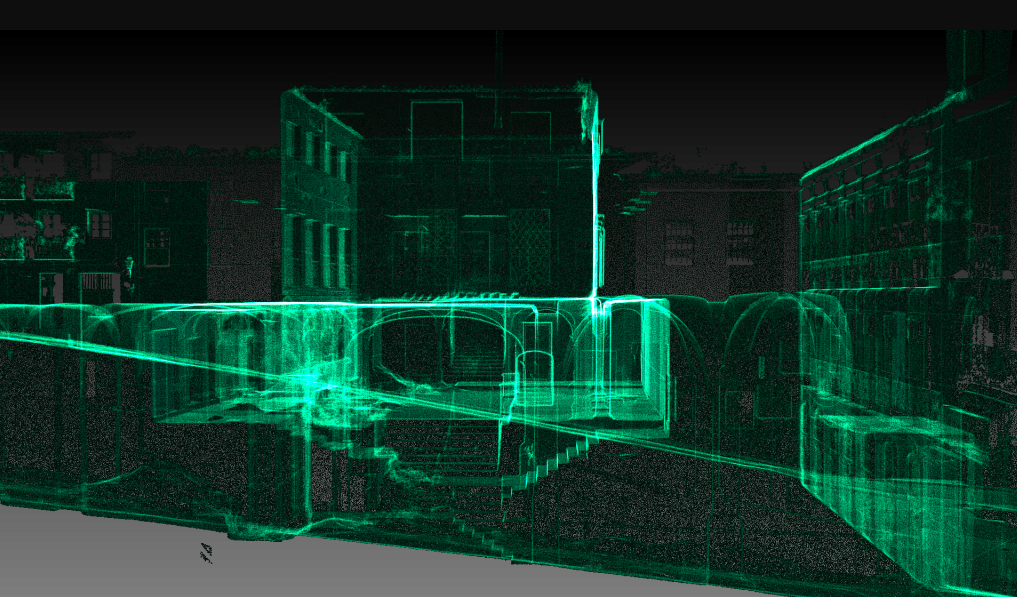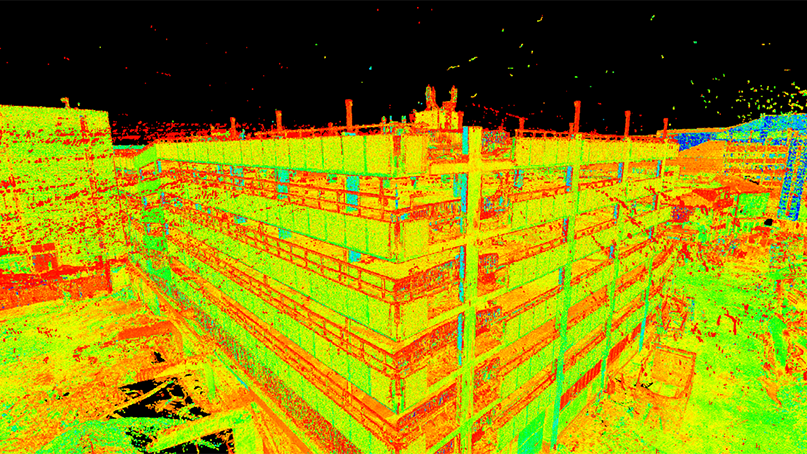Enhancing Manufacturing Processes: The Influence of 3D Laser Scanning on Top Quality Control
3D laser scanning modern technology is transforming quality assurance in production. By giving accurate measurements and high-resolution information, it enables manufacturers to determine inconsistencies from specifications effortlessly. This advancement not just enhances inspection procedures yet additionally enhances functional performance. 3D Scanning. The implementation of this modern technology comes with its very own collection of obstacles. Checking out these aspects reveals the wider implications for sectors and the future landscape of manufacturing

Recognizing 3D Laser Scanning Technology
3D laser scanning technology has actually evolved substantially in recent years, its essential principle continues to be simple: recording the specific geometry of items utilizing laser beam of lights. This innovation uses laser light to determine ranges in between the scanner and various points on an object's surface. The information collected is after that refined to create a thorough 3D version, precisely mirroring the dimensions and shapes of the checked item.
Typically, 3D laser scanners can be categorized right into 2 primary types: contact and non-contact scanners. Call scanners physically touch the challenge gather measurements, whereas non-contact scanners use laser light beams to catch data from a distance. The convenience of this technology enables its application across different sectors, consisting of construction, style, and manufacturing. Its ability to produce high-resolution models facilitates quality assurance, reverse design, and rapid prototyping, inevitably improving style precision and efficiency in production procedures.
Advantages of 3D Laser Scanning in Manufacturing
As manufacturers look for to improve efficiency and precision in their procedures, the advantages of 3D laser scanning have actually become progressively evident. This innovative innovation permits fast and highly exact measurements of intricate geometries, substantially minimizing the moment required for top quality checks. By capturing detailed data, producers can determine inconsistencies early in the production process, thereby minimizing waste and revamp costs.
Additionally, 3D laser scanning assists in much better style recognition, making it possible for designers to compare as-built problems with original specs. This capacity assures that any kind of variances are immediately resolved, boosting overall product top quality. In enhancement, the modern technology sustains the creation of electronic doubles, which can be used for simulations and process optimizations. Consequently, makers not only increase their operational effectiveness yet also enhance their competitive benefit on the market. On the whole, the assimilation of 3D laser scanning represents a transformative action toward attaining greater criteria in manufacturing top quality control.
Combination of 3D Laser Scanning Into Quality Control
Integrating 3D laser scanning into quality assurance processes enhances the precision and effectiveness of examinations throughout manufacturing. This innovation enables manufacturers to capture detailed, high-resolution data of assemblies and elements, enabling precise measurements and comparisons versus style specs. By employing 3D laser scanning, organizations can identify variances from resistances better, which is vital for preserving item integrity.

Real-World Applications and Study
Real-world applications of 3D laser scanning in producing show its transformative impact throughout various industries. For example, aerospace business use this innovation to conduct accurate assessments of parts, guaranteeing they fulfill rigorous safety requirements. A noteworthy instance included a leading airplane supplier that utilized 3D laser scanning to simplify its quality control procedures, considerably decreasing evaluation times and mistakes.
In the automobile industry, suppliers have executed laser scanning to create electronic twins of their automobiles, enabling real-time look here modifications during manufacturing. One automobile firm reported a 30% reduction in rework costs after incorporating this modern technology right click reference into their assembly lines.
In addition, in the consumer items market, business are utilizing 3D laser scanning for quick prototyping, permitting quicker models and improved item styles. These applications highlight exactly how 3D laser scanning not only improves accuracy however additionally boosts performance and innovation across multiple production domain names.
Conquering Difficulties in Application
Executing 3D laser scanning in manufacturing presents a number of obstacles that organizations must browse to fully recognize its advantages. One significant hurdle is the first price of tools and software program, which can deter business from embracing this innovation. In addition, incorporating 3D laser scanning into existing operations requires conquering resistance to transform amongst workers, demanding comprehensive training programs to guarantee effectiveness. Data administration additionally postures an obstacle, as the high quantity of details generated by 3D scanning should be successfully processed and analyzed to obtain workable insights. Compatibility issues with heritage systems might hinder smooth combination, demanding potential upgrades or modifications. Attending to these challenges is essential for producers aiming to improve quality control and optimize manufacturing processes. By creating clear methods for training, financial investment, and data administration, firms can minimize these barriers and launch the transformative possibility of 3D laser scanning in their procedures.
Future Patterns in 3D Laser Scanning for Manufacturing
As manufacturing remains to evolve, the assimilation of 3D laser scanning with increased automation is expected to change production processes. Boosted data analytics will play a crucial function in enhancing workflows and improving quality control. These trends highlight the potential for better performance and precision in making environments.

Increased Automation Assimilation
Although the integration of automation in production has actually been steady, the future of 3D laser scanning is positioned to accelerate this pattern substantially. As producing procedures become progressively complicated, the demand for exact, real-time measurements grows. 3D laser scanning innovation offers automated information capture, minimizing labor prices and lessening human mistake. This combination enables producers to enhance high quality control procedures, allowing fast discovery of inconsistencies in production. Additionally, the alignment of 3D laser scanning with robotics and automated systems helps with smooth procedures, improving total effectiveness. As makers adopt these advanced innovations, they can anticipate better precision and performance, placing themselves here are the findings competitively in a quickly advancing market. The harmony between automation and 3D laser scanning notes a considerable leap forward in producing advancement.
Enhanced Data Analytics
The integration of automation has actually led the way for developments in information analytics within the domain of 3D laser scanning. Makers are significantly leveraging sophisticated formulas and machine learning strategies to evaluate large datasets generated by laser scans. This enhanced information analytics capability enables real-time tracking of manufacturing procedures, enabling the identification of problems and discrepancies a lot more successfully than typical approaches. Predictive analytics can foresee possible issues, considerably minimizing downtime and improving total performance. The ability to picture data in 3 dimensions offers much deeper insights right into production process, cultivating better decision-making. As 3D laser scanning innovation proceeds to develop, the role of information analytics will become significantly important in driving advancement and maintaining affordable advantage in production.
Often Asked Inquiries
What Industries Benefit one of the most From 3D Laser Scanning?
The industries that benefit most from 3D laser scanning consist of manufacturing, building, aerospace, automotive, and medical care. These markets make use of the technology for precision measurements, quality guarantee, and efficient design processes, substantially improving overall functional effectiveness.
How Does 3D Laser Scanning Compare to Conventional Dimension Methods?
3D laser scanning uses greater precision and speed contrasted to typical measurement approaches. It catches in-depth geometries swiftly, minimizing human error and assisting in far better analysis, which eventually improves total quality control in different industries.
What Is the Cost of Implementing 3D Laser Scanning Modern Technology?
The price of implementing 3D laser scanning innovation varies significantly, normally ranging from $10,000 to $100,000, depending upon software program, tools, and training. Organizations needs to evaluate these costs versus possible effectiveness and top quality renovations.
Are There Details Software Application Needs for 3D Laser Scanning?
Yes, 3D laser scanning calls for certain software application, consisting of information handling and modeling applications. Usual options incorporate CAD software application, point cloud handling tools, and specialized applications that help with the assimilation and evaluation of checked data for perfect results.
For how long Does a Typical 3D Laser Scanning Process Take?
A regular 3D laser scanning procedure can take anywhere from a few minutes to numerous hours, depending on variables like the dimension of the things, intricacy of the atmosphere, and called for degree of detail for precision.
3D laser scanning technology is changing quality control in manufacturing. 3D laser scanning innovation has advanced considerably in current years, its fundamental concept continues to be uncomplicated: recording the accurate geometry of items using laser beam of lights. Integrating 3D laser scanning right into top quality control processes boosts the precision and performance of inspections throughout production (3D Scanning). 3D laser scanning technology uses automated data capture, minimizing labor expenses and decreasing human mistake. The price of carrying out 3D laser scanning technology varies significantly, usually ranging from $10,000 to $100,000, depending on training, equipment, and software